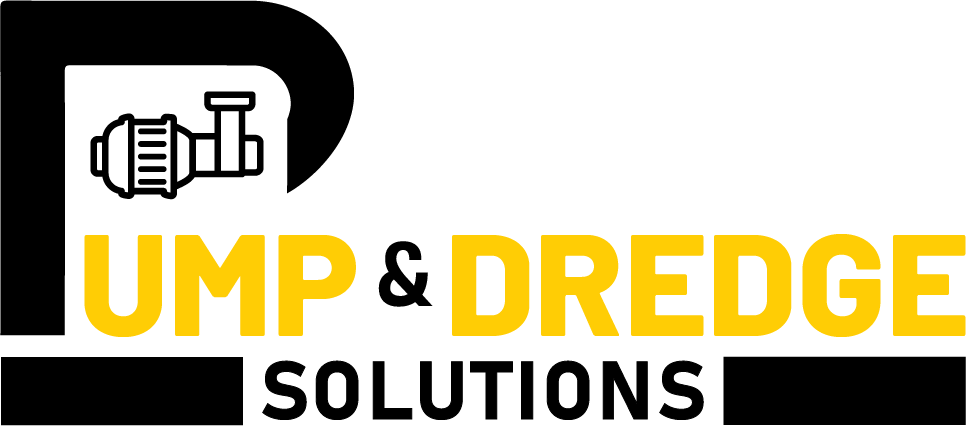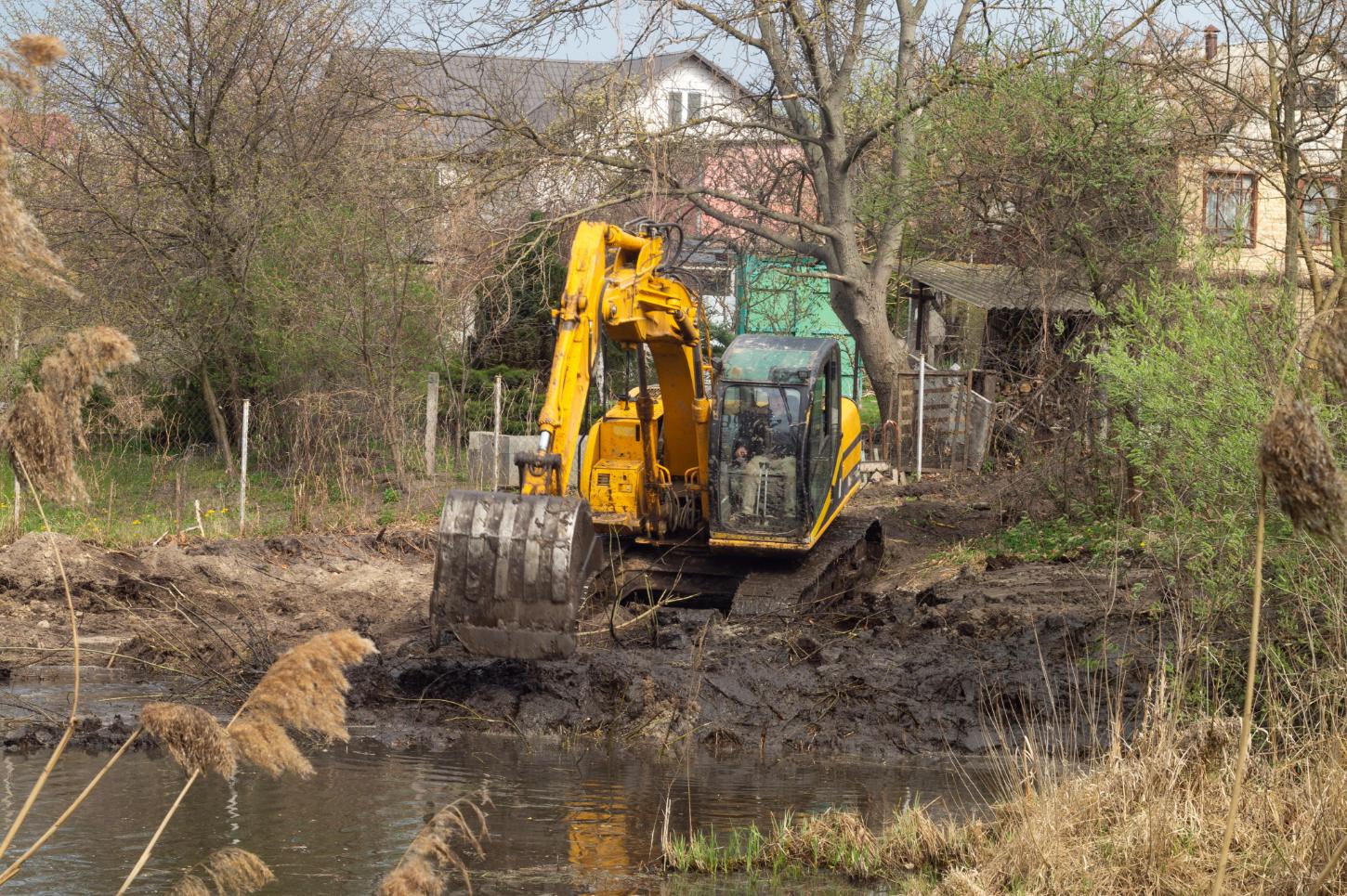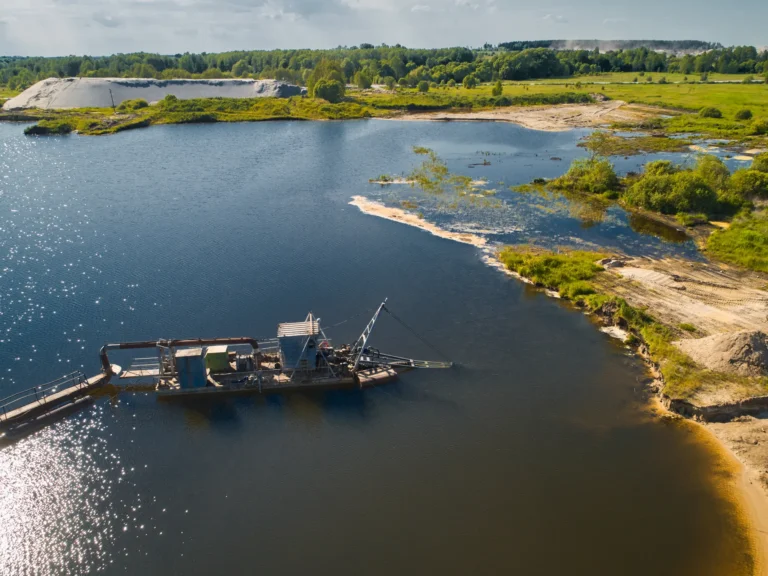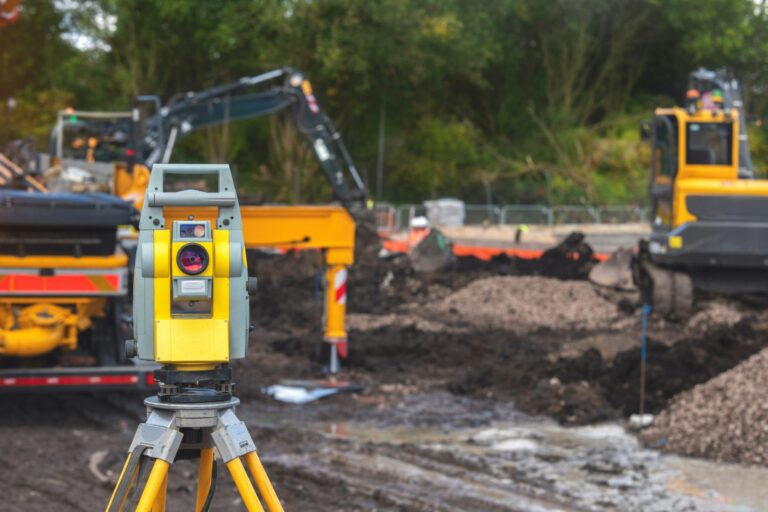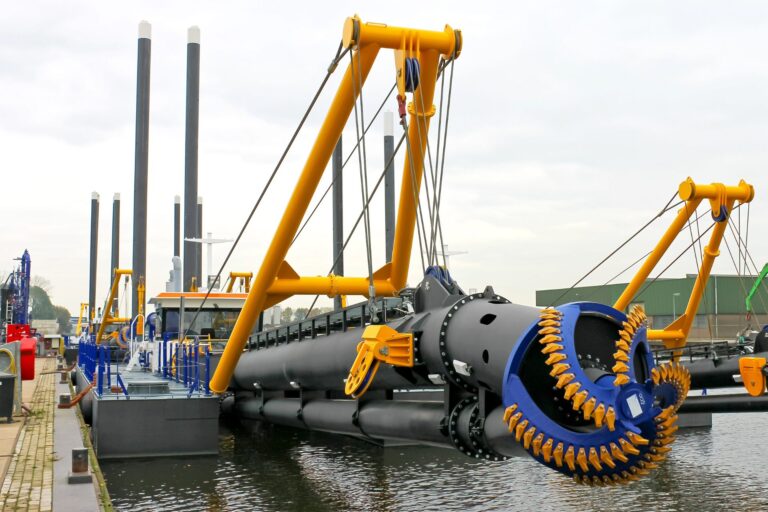Over time, ponds naturally accumulate sediment, organic debris, and algae, leading to a reduction in water depth, poor water quality, and impaired aquatic ecosystems. This sedimentation process can hinder the performance of irrigation systems, reduce the aesthetic appeal of landscaping ponds, and even pose a threat to fish health and vegetation. Regular maintenance is essential to restore pond functionality and preserve long-term usability.
This is where pond dredging equipment plays a crucial role. By removing the excess sludge, silt, and debris from the pond bed, dredging restores optimal depth, improves water flow, and enhances the overall health of the ecosystem. Whether it’s a large stormwater retention pond or a backyard water feature, selecting the right equipment ensures efficient and safe sediment removal.
For property owners and maintenance teams handling confined or hard-to-reach areas, small pond dredge equipment offers a practical and cost-effective solution. These compact systems are designed to operate in tighter spaces without sacrificing performance.
In this blog, we’ll break down the types of pond dredging equipment available, explore their key features, examine common applications, and offer best practices for effective dredging. Whether you’re managing a farm reservoir or maintaining a decorative pond, the right small pond dredge equipment can make a big difference.
Understanding Pond Dredging Equipment
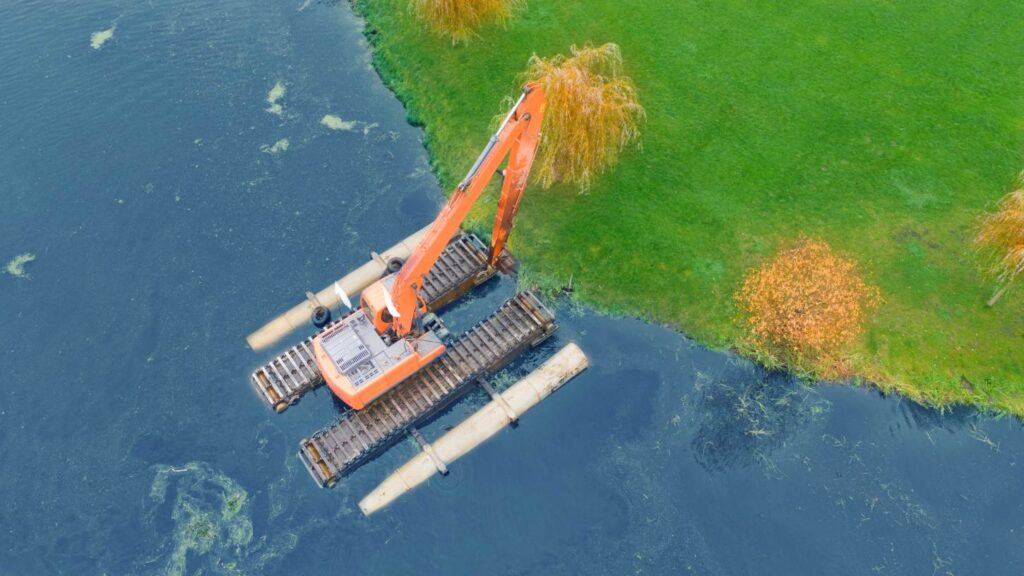
Pond dredging equipment is specifically designed to remove accumulated sediments, sludge, and debris from the bottom of ponds and other small water bodies. This type of equipment helps restore original water depth, improve water quality, and maintain the health of aquatic ecosystems. While all dredging equipment shares the common goal of sediment removal, pond dredgers are uniquely adapted for the challenges posed by smaller or more sensitive environments.
There are two main types of pond dredging equipment based on their operating principles: mechanical and hydraulic. Mechanical dredging involves physically scooping or digging material from the pond bed using tools like backhoes, excavators, or clamshell buckets. This method is effective for removing heavy solids and vegetation, but may cause disruption in delicate aquatic settings. On the other hand, hydraulic dredging uses high-powered pumps to suction sediment through hoses and transport it to a disposal site. Hydraulic systems are often more precise and less invasive, making them ideal for sediment-rich or environmentally sensitive ponds.
Unlike large-scale dredging equipment used in rivers, ports, or coastal projects, pond dredging equipment is typically compact, portable, and easier to maneuver. These systems are tailored for shallow depths and smaller footprints, allowing operators to perform maintenance without extensive site disruption.
Small pond dredge equipment is especially useful for residential ponds, golf course water features, and other confined spaces where access is limited and maneuverability is critical. These units can often be operated by a small crew and are easier to deploy with minimal permitting and setup time. In contrast, larger pond dredgers are better suited for agricultural reservoirs or stormwater basins where volume and sediment load are significantly higher.
Choosing between small pond dredge equipment and larger solutions depends on factors such as pond size, sediment depth, site access, and project goals. Understanding the range of dredging equipment available helps ensure the right fit for your specific maintenance needs. With the right pond dredging equipment, even heavily impacted ponds can be restored efficiently and sustainably.
Types of Pond Dredging Equipment
Pond dredging equipment comes in a variety of forms, each tailored for specific site conditions and dredging goals. Understanding the main types—hydraulic, mechanical, and portable systems—can help pond owners and contractors choose the right setup for effective sediment removal.
Hydraulic Dredgers are among the most commonly used pond dredging equipment for removing fine sediments, sludge, and silt. These systems utilize powerful pumps to vacuum material from the pond bottom and transport it through discharge hoses to a designated disposal site. Suction dredges are ideal for lighter sediments, while cutterhead dredges are equipped with rotating blades that break up compacted material before it is pumped out. These systems offer high efficiency in larger ponds or areas with substantial sediment buildup.
Mechanical Dredgers involve physically digging out material using tools like clamshell buckets, long-reach excavators, or backhoe-mounted attachments. This type of pond dredging equipment is particularly effective for removing heavy debris, vegetation, or compacted materials. While mechanical dredging can be more disruptive to the pond environment, it is suitable for precision work and areas requiring targeted removal.
Amphibious and Portable Systems are often the best option for sites with shallow water, soft terrain, or restricted access. This category includes pond dredge equipment such as pontoon-mounted dredgers, portable suction units, and amphibious excavators. These systems are specifically designed for maneuverability and low-impact operations, making them ideal for small residential ponds, golf course water features, and tight workspaces.
Small pond dredge equipment is valued for its ease of deployment, lower operating cost, and ability to access hard-to-reach areas with minimal setup. It is especially suitable for short-term maintenance, one-time cleanups, or environments with environmental constraints.
Key Features to Consider When Choosing Pond Dredging Equipment
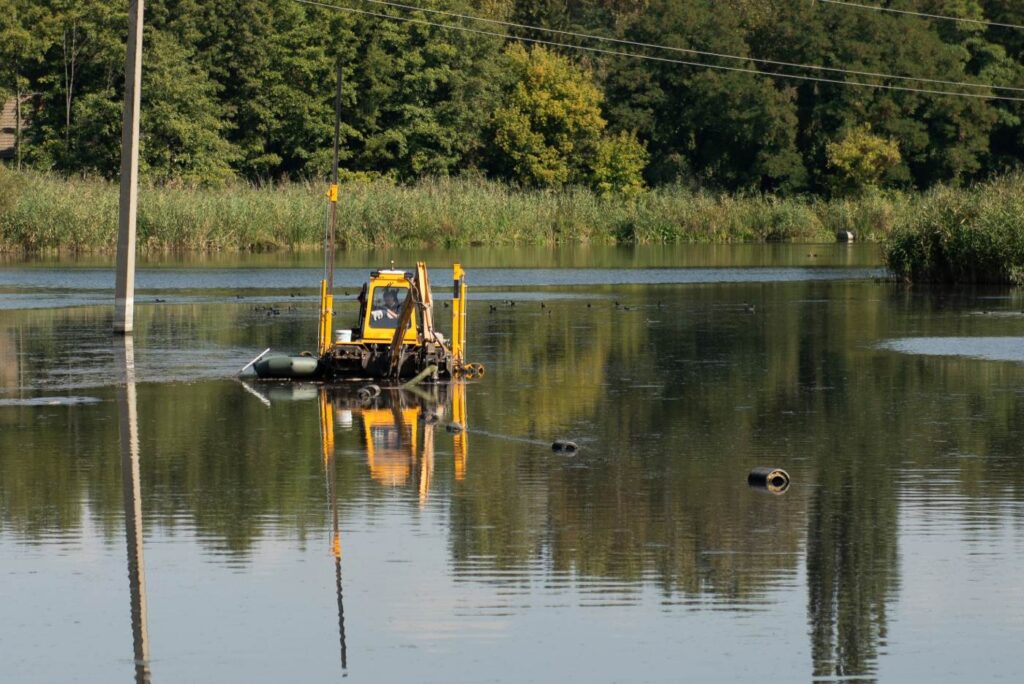
When selecting pond dredging equipment, it’s essential to evaluate key features that directly impact performance, efficiency, and long-term value. From compact residential ponds to larger agricultural or stormwater systems, the right specifications can ensure smoother operations and better outcomes.
Size, Weight, and Maneuverability
For tight spaces or landscaped environments, compact design is critical. pond dredge equipment is typically lightweight and easier to transport, making it suitable for projects with limited access or sensitive terrain. These systems can often be deployed with minimal crew and setup time, reducing overall disruption.
Pump Power and Sediment Handling Capacity
The effectiveness of pond dredging equipment largely depends on the power of its pump and its ability to handle various sediment types. Fine silt, coarse sand, or organic sludge all require different handling capabilities. Ensure the equipment can manage your pond’s specific sediment composition without clogging or excessive wear.
Discharge Distance and Hose Compatibility
Another key consideration is the distance the dredged material needs to be transported. Equipment should support hoses of appropriate length and diameter to match the disposal requirements. High discharge capability is particularly useful when working with larger ponds or disposal sites located far from the dredging area.
Material Durability
Since pond dredging equipment often operates in wet and abrasive environments, corrosion resistance is a must. Look for components made from marine-grade aluminum, stainless steel, or heavy-duty polymers that can withstand continuous exposure to water and sediment. Low-maintenance designs can also reduce downtime and extend equipment lifespan.
Automation, Controls, and Safety Features
Advanced features like remote operation, automatic depth control, and built-in safety systems can greatly improve operator comfort and efficiency. For pond dredge equipment, intuitive controls and automated systems simplify usage and reduce training requirements, making it accessible even to less experienced operators.
In summary, investing in the right pond dredging equipment means balancing functionality with site-specific needs. For residential, commercial, or municipal applications, small pond dredge equipment offers a practical and reliable solution when selected with these key features in mind.
Applications and Use Cases
Pond dredging equipment is used across a wide range of industries and settings, each with unique maintenance needs and environmental conditions. Whether it’s for restoring depth, improving water quality, or preventing costly infrastructure issues, selecting the right dredging equipment plays a critical role in long-term pond health and performance.
Agricultural and Irrigation Ponds
In agricultural settings, sediment buildup in irrigation ponds can reduce water storage capacity and impact crop yields. Pond dredging equipment is essential for clearing silt and organic matter to ensure reliable water availability during planting and harvesting seasons. For smaller farms, pond dredge equipment provides an efficient and budget-friendly solution without requiring large machinery or major site disruption.
Residential or Estate Ponds and Water Features
Homeowners and property managers often face issues with algae, foul odors, and shallow water in ornamental ponds. Small pond dredge equipment is ideal for these residential settings, allowing for easy access and minimal disturbance to landscaping. Compact dredgers can remove debris while preserving the aesthetic and ecological balance of the pond.
Golf Course and Recreational Water Bodies
Decorative ponds and water hazards on golf courses must remain clear and visually appealing. Accumulated sediment can also attract mosquitoes or block irrigation systems. Using pond dredging equipment ensures these water features remain functional and attractive. In tight or remote locations on the course, small pond dredge equipment offers the flexibility to clean hard-to-reach areas with minimal impact on the surrounding course.
Aquaculture and Fisheries Maintenance
For fish farms and aquaculture facilities, maintaining clean pond environments is essential for fish health and growth. Excess sludge can reduce oxygen levels and harbor disease. Dredging equipment helps manage nutrient levels and maintain ideal water conditions, while small pond dredge equipment allows for ongoing maintenance without disrupting operations.
Government or Municipal Stormwater Ponds
Municipal retention and detention ponds are crucial for flood control and stormwater management. Over time, they can fill with sediment and lose capacity. Pond dredging equipment is used to restore volume and flow. For smaller urban basins or community-managed systems, pond dredge equipment provides a practical approach to regular maintenance without requiring heavy infrastructure.
Best Practices for Pond Dredging Projects
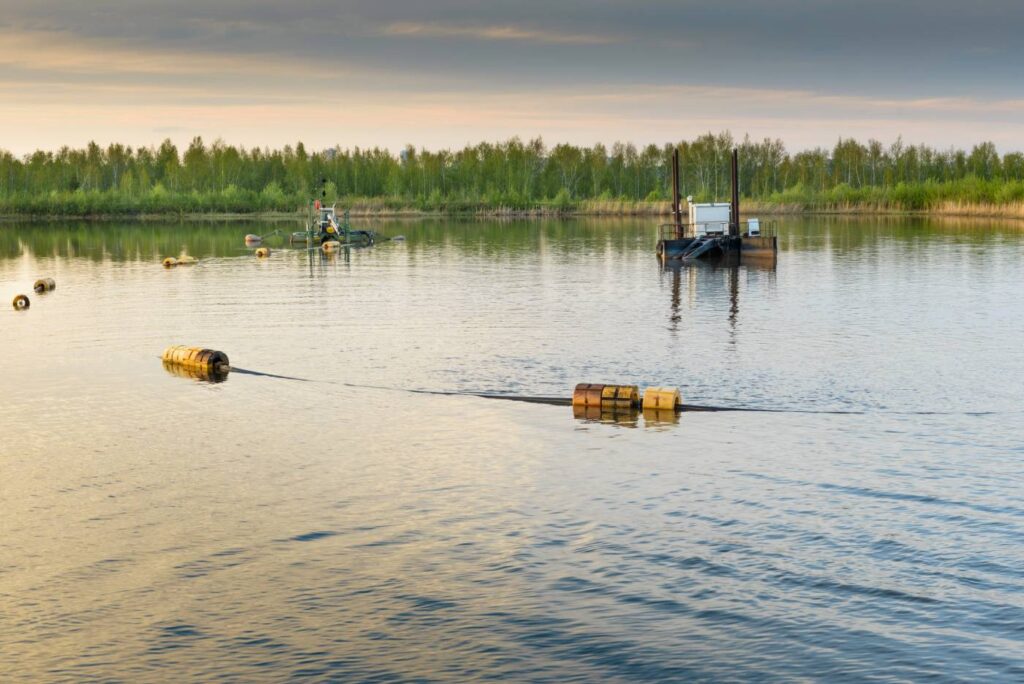
Executing a successful pond dredging project requires more than just having the right machinery. It involves careful planning, environmental awareness, and proper handling to ensure efficient results without causing harm to the ecosystem or surrounding property. Here are the key best practices to follow when using pond dredging equipment for maintenance and restoration.
Site Assessment
Begin with a thorough site assessment to determine the depth of sediment buildup, the type of material (e.g., silt, sand, organic sludge), and the total volume to be removed. Accurate measurements will guide equipment selection and help avoid under- or over-sizing your solution. For small or irregularly shaped ponds, small pond dredge equipment is often more suitable due to its precision and ease of deployment.
Choosing the Right Equipment
Matching the project needs with the appropriate pond dredging equipment is essential. Hydraulic dredgers work well for fine sediment and deep water, while mechanical dredgers are better for compacted or heavy material. In confined or residential areas, small pond dredge equipment offers a compact and efficient alternative with minimal disruption.
Environmental Considerations
Dredging can disturb aquatic habitats, especially in ponds with fish, plants, or protected wildlife. It’s important to assess water quality, ensure proper sediment disposal, and obtain necessary environmental permits. Using pond dredging equipment with low turbidity generation and precision control helps limit ecological impact.
Scheduling and Frequency
Dredging should be scheduled during periods of low water use or minimal ecosystem activity, such as early spring or late fall. Regular maintenance with pond dredge equipment can prevent major sediment buildup, reducing the need for large-scale interventions later on.
Safety and Equipment Handling
Follow safety guidelines for both personnel and equipment. Ensure operators are trained to handle the chosen dredging equipment, especially when dealing with submerged obstacles or operating in remote areas. Use personal protective equipment, secure work zones, and monitor for any equipment malfunctions during operation.
By following these best practices and selecting the right pond dredging equipment for your site, you can achieve effective sediment removal, protect the environment, and extend the life of your water body. Small pond dredge equipment, in particular, is ideal for routine maintenance in sensitive or restricted spaces.
Conclusion
Choosing the right pond dredging equipment is critical to maintaining water quality, preventing sediment overload, and extending the usability of ponds across various applications. From residential water features to municipal stormwater basins, effective dredging helps preserve both function and appearance.
Proper planning, including site assessment and understanding the specific sediment challenges, ensures that the selected dredging equipment delivers optimal results. Matching the equipment to the project scope, especially when considering pond dredge equipment for limited-access or shallow sites, can lead to significant cost savings and improved efficiency.
Whether you’re managing a golf course pond, a fishery, or a community retention basin, our team can help you select and deploy the most effective solution. Contact us today for expert advice, equipment recommendations, or rental options tailored to your needs. We’re here to support your next pond restoration project with dependable pond dredging equipment and expert guidance every step of the way.
